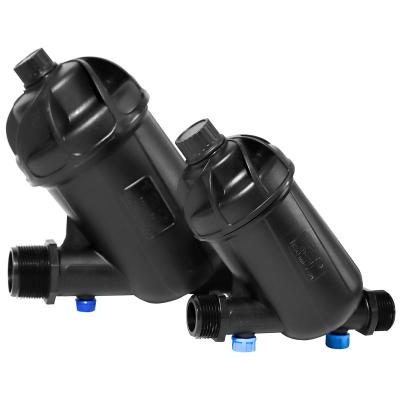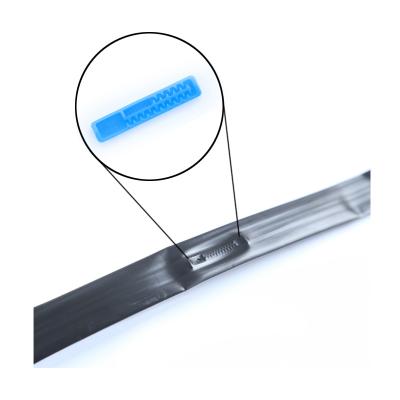Advantages and disadvantages of drip irrigation technology
1. Advantages
Save water, fertilizer and labor
Drip irrigation is a full pipeline water delivery and local micro-irrigation, which reduces the leakage and loss of water to the lowest limit. At the same time, because it can supply the water required by the crop root zone in a timely manner, there is no problem of peripheral water loss, and the water use efficiency is greatly improved. Irrigation can be conveniently combined with fertilization, that is, dissolve the chemical fertilizer and pour it into the irrigation system. Because the chemical fertilizer is combined with the irrigation water, the fertilizer nutrients are directly and evenly applied to the root layer of the crop, which truly realizes the synchronization of water and fertilizer, and greatly improves the effective use of fertilizer. At the same time, because it is small-scale local control, micro-irrigation, and less water and fertilizer leakage, it can save fertilizer application and reduce pollution. The use of irrigation and fertilization technology provides convenience for timely replenishment of expensive trace elements for crops and avoids waste. The drip irrigation system is only controlled manually or automatically by valves, combined with fertilization, so it can significantly save labor input and reduce production costs.
2. Control temperature and humidity
Traditional furrow irrigation greenhouses require a large amount of water to be irrigated at a time and the ground surface remains moist for a long time. Not only does the greenhouse temperature and ground temperature decrease too quickly, but the recovery is slower, the evaporation volume increases, and the indoor humidity is too high, which easily leads to vegetable or flower diseases and insect pests. Because drip irrigation is a local micro-irrigation, most of the soil surface is kept dry, and the dripper will evenly and slowly supply water to the root soil layer, which has obvious effects on maintaining and rising ground temperature, reducing water evaporation, and reducing indoor humidity. The drip irrigation under the film is adopted, that is, the drip irrigation pipe (band) is arranged under the film, and the effect is better. In addition, because drip irrigation is convenient to operate, high-frequency irrigation can be implemented, and the outlet hole is small, the flow rate is slow, each irrigation time is relatively long, and the soil moisture change range is small, so the soil in the root zone can be controlled to be kept close to vegetables for a long time. , The humidity of the growth of flowers, etc. As the indoor air humidity and soil humidity are controlled, the occurrence of pests and diseases can be significantly reduced, and the amount of pesticides can be reduced.
3. Maintain the soil structure
Under the effect of large irrigation volume of traditional furrow and border irrigation, the facility soil is subject to more erosion, compaction and erosion. If the soil is not plowed and loosened in time, it will cause severe compaction, decrease in aeration, and damage the soil structure to a certain extent. Drip irrigation is micro-irrigation, in which water penetrates into the soil slowly and evenly, which can maintain the soil structure and form a suitable soil water, fertilizer, and thermal environment.
4. Improve quality, increase production and efficiency
Because the application of drip irrigation reduces the amount of water and fertilizer, pesticide application and the occurrence of diseases and insect pests, it can significantly improve the quality of the product.
In short, compared with traditional irrigation methods, the use of drip irrigation in greenhouses or greenhouses and other facilities can greatly increase product yields, speed up the market, and reduce the cost of water and fertilizer, pesticide application and labor, so economic and social benefits Significantly. Facility horticulture drip irrigation technology meets the requirements of high-yield, high-yield modern agriculture, which is the fundamental reason why it can exist and be widely used.
2. Disadvantages
1. Easy to cause blockage
The clogging of the irrigator is the most important problem in the current drip irrigation application. In severe cases, the entire system will not work properly or even be scrapped. The cause of blockage can be physical, biological or chemical. Such as sediment, organic matter or microorganisms and chemical condensate in the water. Therefore, the water quality requirements for drip irrigation are strict, and it should generally be filtered, and sedimentation and chemical treatments are required when necessary.
2. May cause salt accumulation
When drip irrigation is performed on the soil with high salt content or the use of salty drip irrigation, salt will accumulate on the edge of the humid area. If it encounters light rain, the salt may be washed into the root zone of the crop and cause salt damage. Drip irrigation should continue. In places where there is insufficient washing or where there is no sufficient rainfall in autumn, do not use drip irrigation or use salty drip irrigation on soil with high salt content.
3. May limit the development of the root system
Because drip irrigation only wets part of the soil, and the roots of the crops have water oriented, this will cause the roots of the crops to grow in the wet area. In addition, in areas where there is no agriculture without irrigation, such as the arid area of Northwest my country, when drip irrigation is applied, the emitters should be arranged correctly.



